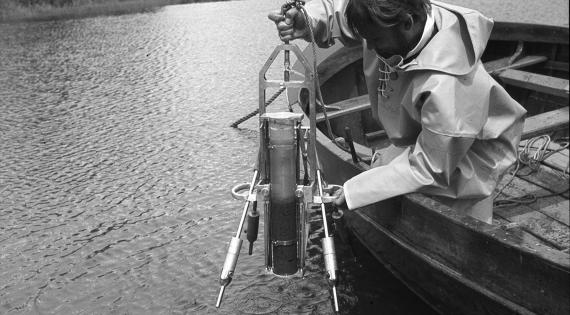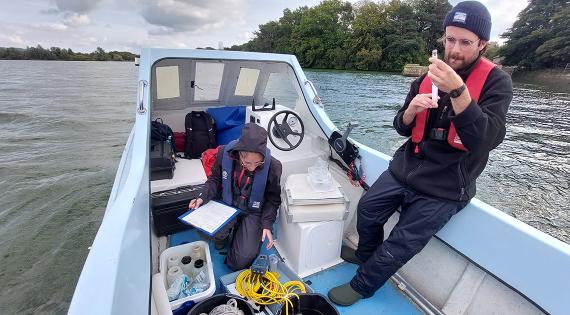An online portal to help local people, policy-makers and regulators understand the ecology of Loch Leven better is being launched today by the UK Centre for Ecology & Hydrology (UKCEH).
Situated in Perth and Kinross, Loch Leven is the largest shallow loch in lowland Scotland and is of international importance as a brown trout fishery, wildlife haven and recreational site.
The Loch Leven portal provides current and historical information about the loch, together with an array of useful resources for schools.
By sharing high quality data on the past and current condition of the loch, the portal will ensure that decisions on how to protect, maintain and manage the loch for the benefit of people and nature are based on strong evidence. These decisions include how to reduce toxic algal blooms.
Loch Leven hosts one of the longest running lake monitoring programmes in the world and the data being made available through the portal are extensive. UKCEH and its predecessors have been sampling Loch Leven every two weeks, all year round, since 1968. Also, every ten years since 1985, UKCEH has carried out detailed weekly assessments, over a 12-month period of the amount of nutrients entering the loch from its catchment. The next survey is due in 2025.
Excess amounts of nutrients – such as nitrogen and phosphorus – can lead to a rapid accumulation (bloom) of blue-green algae (cyanobacteria) in all types of lakes, and this has been a well-documented problem at Loch Leven since the 1970s. Blue-green algae have a serious detrimental effect on water quality, not least because some species produce toxins that can cause health problems if touched or swallowed. These include skin rashes, nausea and vomiting, and diarrhoea. These toxins can be particularly dangerous to dogs, if ingested.
The nutrients that fuel algal growth come from a variety of sources. These include agricultural runoff, industrial discharges, and effluent from septic tanks and other types of wastewater treatment systems. In the 1980s and 1990s, massive outbreaks of blue-green algae at Loch Leven were tackled by working with farmers, Scottish Water and the local planning department to reduce the levels of nutrients entering the loch. This improved water quality.
However, additional steps are likely to be needed to tackle the current increase in blue-green algae. This is because climate change is making the loch more sensitive to these nutrients. For example, higher temperatures are causing phosphorus that has been stored in the loch sediments over many years to be recycled back into the water. This increases nutrient levels and encourages the algae to grow. A recent report published by the Centre of Expertise for Waters (CREW) shows that this problem is occurring across Scotland and is not specific to Loch Leven.
Dr Linda May, a freshwater ecologist at UKCEH, who leads the Loch Leven long-term monitoring programme, said: “Blue-green algal growth can be caused by a variety of factors, so it is often difficult to find the right solution to the problem. We hope that, by sharing the Loch Leven data through this portal, we can provide high-quality data to ensure that well-informed decisions are made about measures to reduce these algal blooms.”


